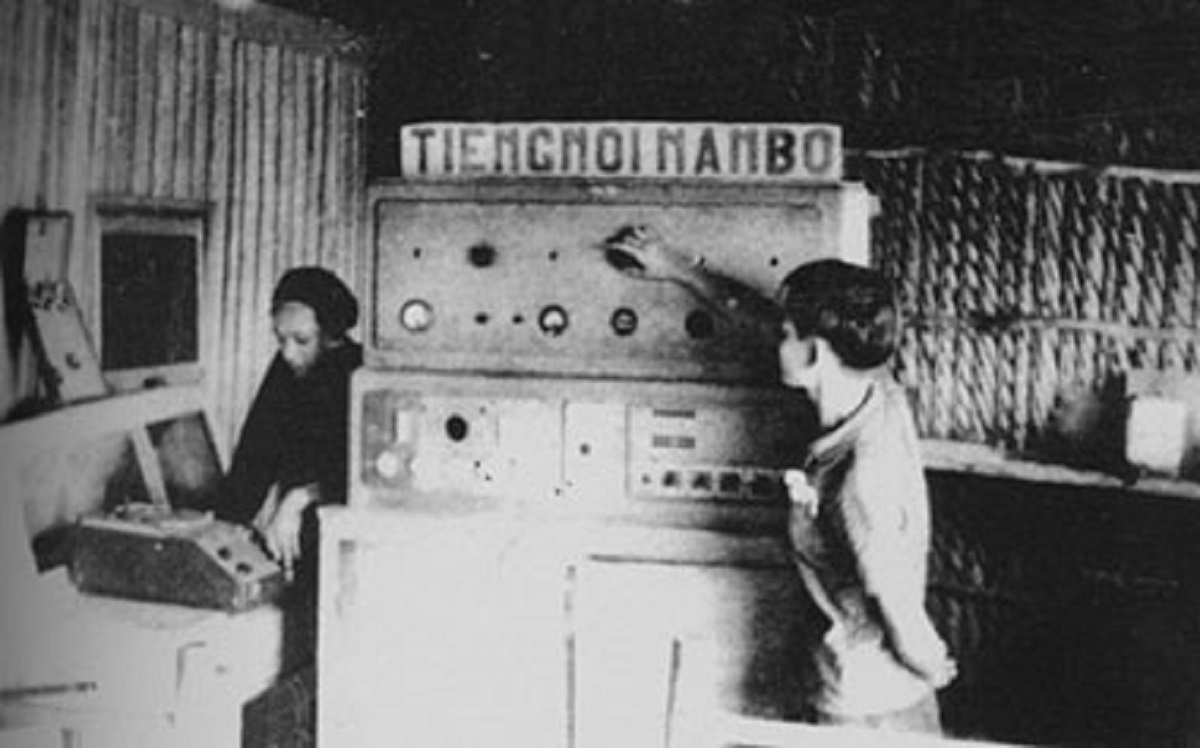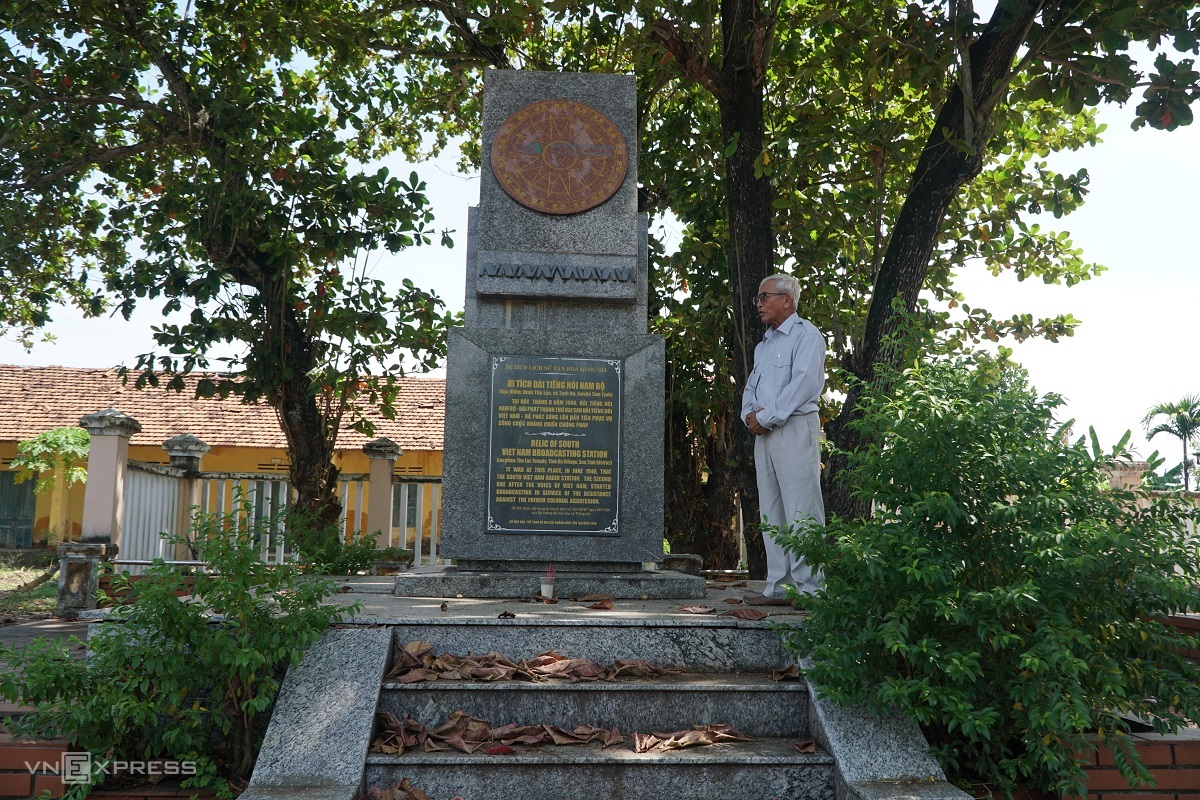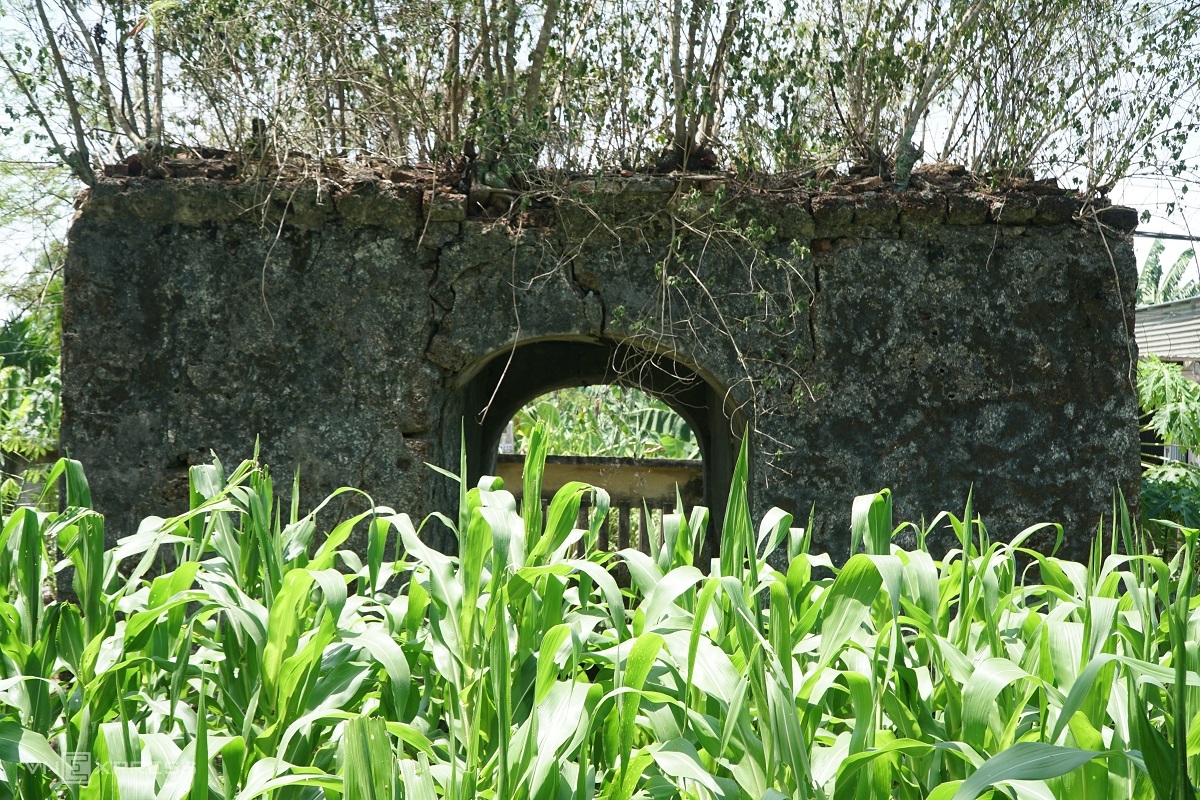Located on the north bank of the Tra Khuc river, 2 km west of the center of Quang Ngai province, the Southern Voice radio station, housed in Tho Loc communal house, is a historical site associated with the resistance against French colonialism. While the Voice of Vietnam radio station served as the official voice of the government, the Southern Voice radio station was entrusted with a special mission: to be ready to replace the national station if needed and to bring the voice of resistance to the people of southern Vietnam.
According to documents from the Vietnam News Agency's Information and Documentation Center, the station officially began broadcasting on 20/7/1946 at the Tho Loc communal house in Tinh Ha commune, Son Tinh district (now Son Tinh commune), following the directive of late Prime Minister Pham Van Dong.
 |
Southern Voice radio station in Quang Ngai. Photo: Vietnam News Agency |
Southern Voice radio station in Quang Ngai. Photo: Vietnam News Agency
The station's establishment occurred during a critical period. On 23/9/1945, just three weeks after the declaration of independence, French forces opened fire to recapture Saigon - Gia Dinh. On 26/9/1945, President Ho Chi Minh sent a letter urging the people of southern Vietnam to rise up, while also dispatching officials and military leaders to the south.
As the war of resistance began, the battlefield was clearly divided into two zones: the free zone and the zone temporarily occupied by French forces. Quang Ngai at that time belonged to the free zone of Military Zone 5, where the office of late Prime Minister Pham Van Dong, the government's representative in south-central Vietnam, was located.
As the nerve center of the resistance, Military Zone 5 had schools, hospitals, a military academy, and, crucially, a radio station for propaganda and political mobilization. Therefore, in July 1946, skilled engineers and journalists were sent to Tho Loc village to build this facility.
The station's first director was journalist Nguyen Van Nguyen, who had served as secretary of the editorial board of L’Avant Garde (Tien Phong) newspaper and was twice exiled to Con Dao prison by the French colonialists. Other leaders involved in the station's establishment and operation included revolutionary Huynh Van Tieng, a member of the Southern Vietnam Resistance Committee and head of the Propaganda Department; and journalist Ly Van Sau (spokesperson for the Provisional Revolutionary Government of the Republic of South Vietnam at the Paris Peace Conference). The team of reporters and editors included Tuyet Minh, Cam Ba, Minh Ly, Van Tich, Van Son, Cao Phuoc, and Van Hoa.
 |
Mr. Nguyen Dinh Oanh (former chairman of Son Tinh district during the period when the Southern Voice radio station was recognized as a national historical site) visits the relic. Photo: Pham Linh |
Mr. Nguyen Dinh Oanh (former chairman of Son Tinh district during the period when the Southern Voice radio station was recognized as a national historical site) visits the relic. Photo: Pham Linh
In the first broadcast on 20/7/1946, after the "Youth March" anthem, Mr. Pham Van Bach, chairman of the Administrative Resistance Committee of Southern Vietnam, read a call to arms, declaring the station's establishment. Twice daily, morning and evening, programs were broadcast from the Tho Loc communal house, beginning with the words: "This is the Southern Voice radio station. The voice of pain. The voice of hatred. The voice of combat", bringing the voice of the revolution to the people of southern Vietnam.
Initially, the station broadcast in Vietnamese, later adding French. The content included current events, war news, music, and commentaries exposing the colonialists' schemes and calling for unity in the resistance. Notably, to produce news bulletins in French, Mr. Pham Van Dong appealed to Mr. Pon-met Ten, the French manager of the Bong Mieu gold mine in Quang Nam, to heed the call of righteousness and become a reporter.
Mr. Nguyen Dinh Oanh, former chairman and secretary of Son Tinh district, who assisted in compiling the national historical site dossier for the station, noted that establishing the radio station in the Tho Loc communal house, by the Tra Khuc river, ensured both surprise and safety.
"The communal house was traditionally a place for cultural and spiritual activities. By locating the station there, it was effectively camouflaged and protected by the surrounding community, as this was also the homeland of revolutionary generals. However, during this time, the enemy also bombed nearby locations," Mr. Oanh said.
According to documents from the Museum of Vietnamese Scientists' Heritage, at the end of 1946, anticipating enemy raids and bombings, the Southern Voice radio station was relocated to the Son Tan area of the former Son Ha district (later merged into Son Tay commune). There, the station took over from the Voice of Vietnam radio station from 7/10/1947 to 19/12/1947, while the Voice of Vietnam station changed locations.
During this period, the Southern Voice radio station added another broadcast frequency, calling itself the "Thap Muoi Voice radio station, the mobile voice of the southern resistance base". This activity prompted the French command in southern Vietnam to launch numerous sweeps and searches, unaware that the station was located in central Vietnam, 1,000 km from Saigon.
 |
Of the communal house, where the radio station was located, only the three-entrance gate remains, and even that is deteriorating. Photo: Pham Linh |
Of the communal house, where the radio station was located, only the three-entrance gate remains, and even that is deteriorating. Photo: Pham Linh
In early 1948, the Southern Voice radio station moved to the mountainous region of Binh Dinh province and was renamed the Southern Vietnam Voice radio station, with the codename "Tay Son Group", under the direct authority of Inter-zone 5 Committee and the Administrative Resistance Committee of South Central Vietnam. During this time, journalist Ly Van Sau served as deputy director of the Southern Vietnam Voice radio station.
From mid-1953, as the Voice of Vietnam radio station's signal strengthened, and the Southern Voice resistance radio station and the Saigon - Cho Lon radio station established stable programming, the Southern Vietnam Voice radio station gradually reduced its operations and ceased broadcasting around the end of 1953.
In 1994, the original broadcasting site at the Tho Loc communal house was recognized as a national historical site. In 2014, the Quang Ngai Department of Culture, Sports and Tourism and the People's Committee of Son Tinh district inaugurated a memorial stele at the site.
The then-general director of the Voice of Vietnam radio station stated that, reflecting on the station's significant contributions to the two wars of resistance against the French and the Americans, those working in radio broadcasting can rightfully take pride in "a Ho Chi Minh Trail on the airwaves".
Mr. Nguyen Hoang Hiep, secretary of the Son Tinh Commune Party Committee, said that the Southern Voice radio station historical site holds great educational value in terms of tradition, and the Commune Party Committee considers it a key location for introducing and educating younger generations about this tradition. However, the site has not received much investment in recent times.
"I hope the site will receive investment commensurate with the station's stature and value, and that it will become more closely connected to the community, especially students," Mr. Hiep said.
Mr. Phan Van Hoa, deputy director of the Quang Ngai Department of Culture, Sports and Tourism, stated that the department manages the site. Currently, the site is deteriorating due to weather, natural disasters, and lack of timely restoration. "In the future, the department will advise the province to consider and carry out a comprehensive restoration to preserve and promote the historical value of this site, making it a vital educational resource for younger generations," Mr. Hoa said.
Pham Linh












